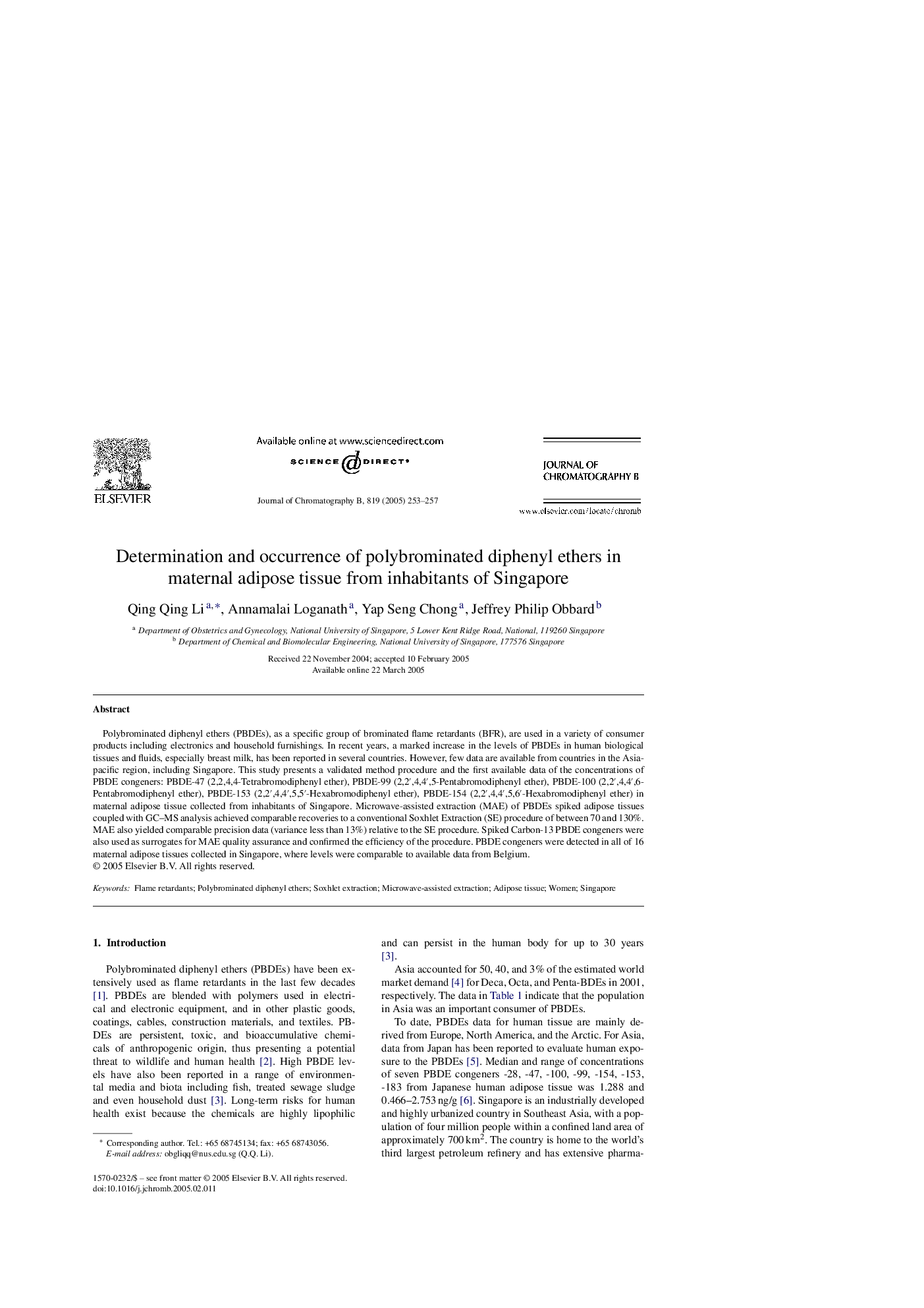| Article ID | Journal | Published Year | Pages | File Type |
|---|---|---|---|---|
| 10552339 | Journal of Chromatography B | 2005 | 5 Pages |
Abstract
Polybrominated diphenyl ethers (PBDEs), as a specific group of brominated flame retardants (BFR), are used in a variety of consumer products including electronics and household furnishings. In recent years, a marked increase in the levels of PBDEs in human biological tissues and fluids, especially breast milk, has been reported in several countries. However, few data are available from countries in the Asia-pacific region, including Singapore. This study presents a validated method procedure and the first available data of the concentrations of PBDE congeners: PBDE-47 (2,2,4,4-Tetrabromodiphenyl ether), PBDE-99 (2,2â²,4,4â²,5-Pentabromodiphenyl ether), PBDE-100 (2,2â²,4,4â²,6-Pentabromodiphenyl ether), PBDE-153 (2,2â²,4,4â²,5,5â²-Hexabromodiphenyl ether), PBDE-154 (2,2â²,4,4â²,5,6â²-Hexabromodiphenyl ether) in maternal adipose tissue collected from inhabitants of Singapore. Microwave-assisted extraction (MAE) of PBDEs spiked adipose tissues coupled with GC-MS analysis achieved comparable recoveries to a conventional Soxhlet Extraction (SE) procedure of between 70 and 130%. MAE also yielded comparable precision data (variance less than 13%) relative to the SE procedure. Spiked Carbon-13 PBDE congeners were also used as surrogates for MAE quality assurance and confirmed the efficiency of the procedure. PBDE congeners were detected in all of 16 maternal adipose tissues collected in Singapore, where levels were comparable to available data from Belgium.
Keywords
Related Topics
Physical Sciences and Engineering
Chemistry
Analytical Chemistry
Authors
Qing Qing Li, Annamalai Loganath, Yap Seng Chong, Jeffrey Philip Obbard,
